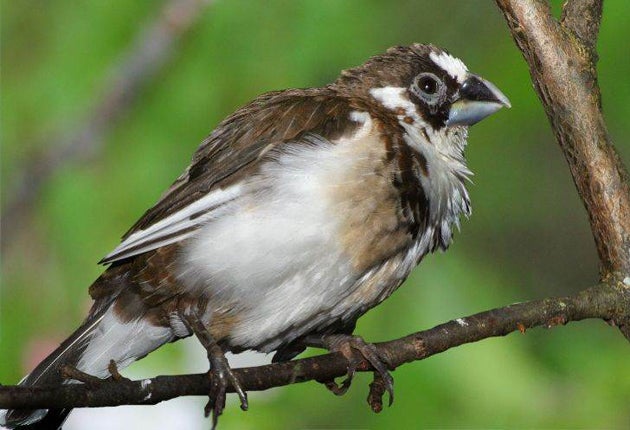The original tweeter – finch's songs decoded

The elaborate songs of a bird species famed for its wide repertoire of tunes have been decoded for the first time.
Scientists have been able to predict the correct sequence of notes and "syllables" in the Bengalese finch's melodious, but erratic songs.
The team from Pennsylvania State University now believe they can reproduce the bird's song after studying more than 25,000 melodies recorded from a finch which was kept in a sound-proofed studio on campus for several days.
The study, carried out by Dr Dezhe Jin is part of a wider investigation into how individual brain cells can control birdsong, which could help to shed light on the complex neural networks involved in human speech.
Earlier work by Dr Jin and his colleagues focused on the simpler songs of the zebra finch – a close relative of the Bengalese version – which has helped to explain how the brain of the bird controlled the complex vocalisation involved when young birds learn to sing the song of their parents.
"Unlike dogs and cats, whose vocalisations are innate and unlearned, songbirds learn a song in much the same way as humans learn a language – through cultural transmission," said Dr Jin.
"We saw that when one syllable was sung, a specific set of neurons [brain cells] in the clump fired, which in turn caused the next set of neurons to fire and that was associated with the next syllable in the song being sung.
"The sequential bursts of brain activity represent sequential notes in the same piece of music," he explained.
Both humans and birds arrange sets of learned syllables in a sequence, or syntax, in order to communicate.
The syntax of birds if simpler than that of humans, but scientists believe that understanding it will help the understanding of human speech. The Bengalese finch posed more of a problem than the zebra variety, which learns just one song during its lifetime, because it has such a varied repertoire. The scientists, however, were able to solve the problem of trying to predict its songs by using a variation on a statistical technique called the "hidden Markov model".
Instead of one-to-one mapping between a syllable in the song and a circuit neural activity in the brain – which has been used to explain the song of the zebra finch – researchers refined the analysis to a "many-to-one" mapping, meaning each syllable of the song was plotted to several neural circuits.
Join our commenting forum
Join thought-provoking conversations, follow other Independent readers and see their replies
Comments